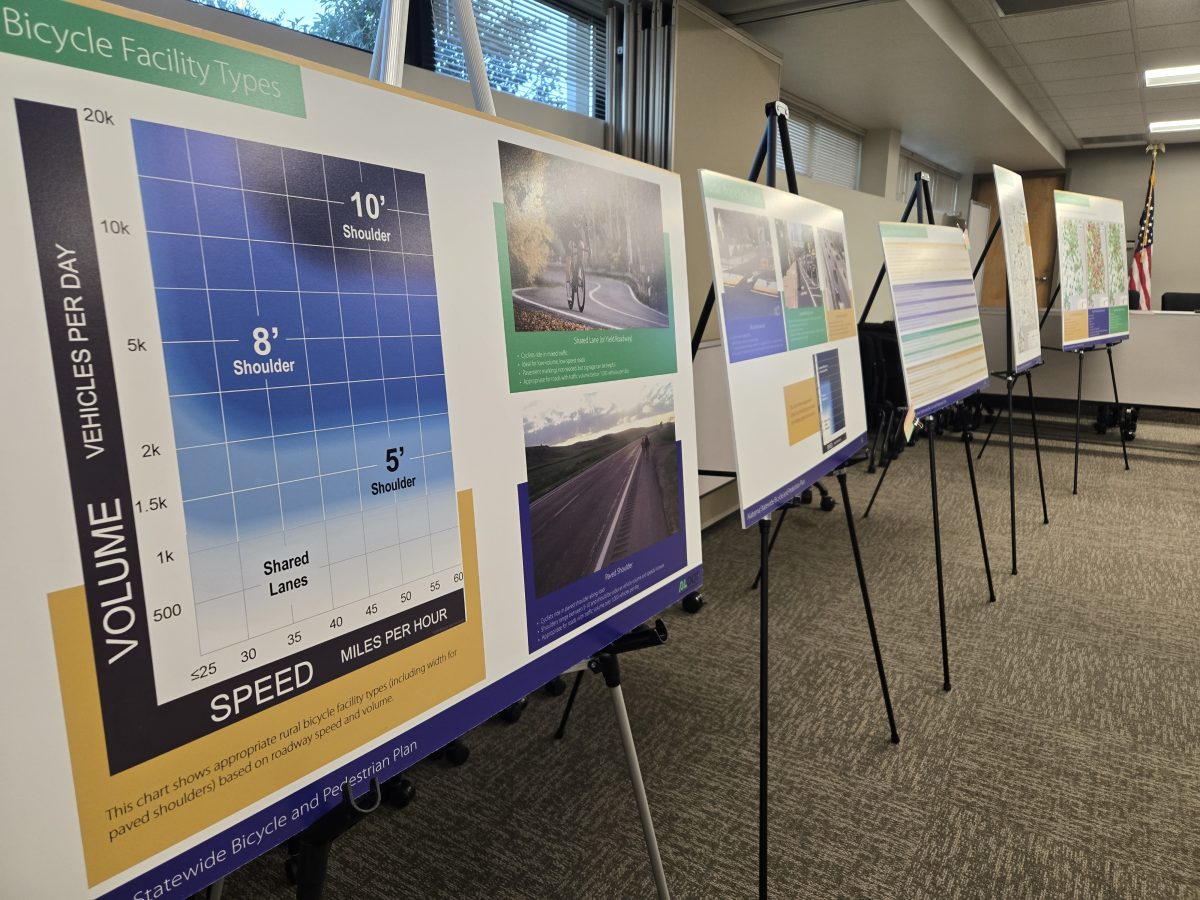The Alabama Department of Transportation held a bicycle and pedestrian safety workshop on Monday at the department’s West Central Region office.
This is one of five public meetings the ALDOT is holding throughout the state to receive public feedback on Alabama pedestrian and bicycle safety measures.
“These type of meetings, they’re a cornerstone to our public involvement process,” said John McWilliams, the public information officer for ALDOT’s West Central region.
During the workshop, ALDOT engineers, planners and other consultants guided citizens through various maps and graphics depicting potential future outcomes for pedestrian and cyclist safety.
“As Tuscaloosa continues to grow, we have to grow with it,” McWilliams said. “A lot of these roadway users also use forms of transportation like bicycles and scooters and things of that nature. So we want to become all inclusive when it comes to connectivity.”
One plan involved long-distance bike corridors connecting major cities throughout Alabama. Tuscaloosa was deemed a high-demand biking city, both recreationally and for utilitarian use.
Corridors around larger cities were deemed “priority.” Plans were similar to those proposed in their 2017 statewide bicycle and pedestrian plan. Corridors have yet to be built, and a planned date for construction has not been established, ALDOT officials said.
Other plans included altered road design to give bike lanes more space and protection to shield cyclists from merging cars.
Additional cyclist protections were something several citizens connected with. Tuscaloosa citizens such as Rollins Baird, a five-year resident and UA alum, discussed their struggles as cyclists within the city.
“It’s really important to focus on the places where bike lanes end and cyclists have to go back [into] traffic with vehicles, because places like that, if they’re not thought out properly or managed well, they can be really dangerous,” Baird said.
Sumner Baggett, a representative from the Alabama Urbanists Coalition’s Tuscaloosa chapter, attended the workshop to advocate for an interconnected cycling network within Tuscaloosa and altered intersection design, including concrete barriers along the corners of intersections to protect cyclists from turning vehicles. Baggett cited as his inspiration Dutch urban planning design philosophies, which focus on maximizing pedestrian and cyclist safety and creating communities not reliant on cars to get around.
Dr. Janet Brown, an assistant professor at the Capstone College of Nursing, attended to voice her encouragement for more walking and biking. Brown joined the Tuscaloosa Metropolitan Planning Organization’s Bicycle and Pedestrian Committee after receiving a CDC-funded grant to work on local projects to increase cycling and walking.
Brown said an increase in daily physical activity would decrease hypertension and obesity rates, which would then reduce congestive heart failure or type 2 diabetes.
Brown said this issue is especially relevant in Alabama, which currently has the fifth-highest obesity rate of any state, the fifth-highest hypertension mortality rate and the third-highest type 2 diabetes rate.
Brown mentioned solutions such as traffic calming, which refers to methods for reducing the speed and volume of vehicles on roads such as speed bumps, and changing intersection designs.
The workshop is part of the department’s annual five-year pedestrian and cyclist safety plan, where the department evaluates current conditions and policies, receives public feedback, and then documents the plan.
As part of the 2021 federal Bipartisan Infrastructure law, $550 billion was allocated nationwide for transportation over the next five years, an ALDOT presentation said during the workshop.
“Approximately $5.5 billion of the $550 Billion from the Bipartisan Infrastructure Bill was allocated to Alabama over a five-year period that covers Fiscal Year 2022 to 2026.” said Allison Green, ALDOT Communications Manager, in an email. “All federal money is restricted to one of 12 funding categories, such as the National Highway System (interstate and U.S. highways), Surface Transportation (bridge replacement, state highway resurfacing, new lanes) and highway safety. About one-third of the new federal money is restricted to one of five new categories, three of which are not directly related to road and bridge improvements.”
Green said the widening of I-65 is one of ALDOT’s priority projects, and one of the initiatives the $5.5 billion will be spent on. This comes after the announcement of its $300 million expansion by Gov. Kay Ivey a year ago, as well as a state-wide campaign called the “Go Wide I-65 Coalition” in August. Construction is expected to be in full swing by spring 2025 and finished by 2027, per Shelby County engineers.
ALDOT has budgeted approximately $113 Million for “transportation alternatives” for FY 2024-27.
“Some funds have been obligated towards new sidewalks, pedestrian bridges, pedestrian safety projects, ADA [Americans with Disabilities Act] improvements, and shared use paths,” an ALDOT presentation said during the workshop.
ALDOT will have a “Current Conditions” meeting in December and a “Recommendations Update” in February 2025 for the department’s Tuscaloosa area bicycle and pedestrian plan. A draft of the plan is expected to be complete by June 2025, and it will be adopted by Metropolitan Planning Organizations, the local councils that enforce these safety recommendations, by August 2025.















